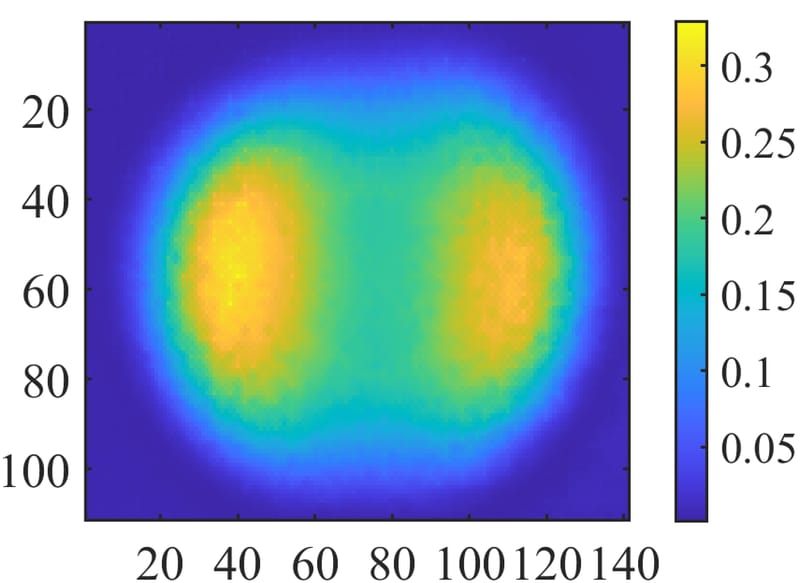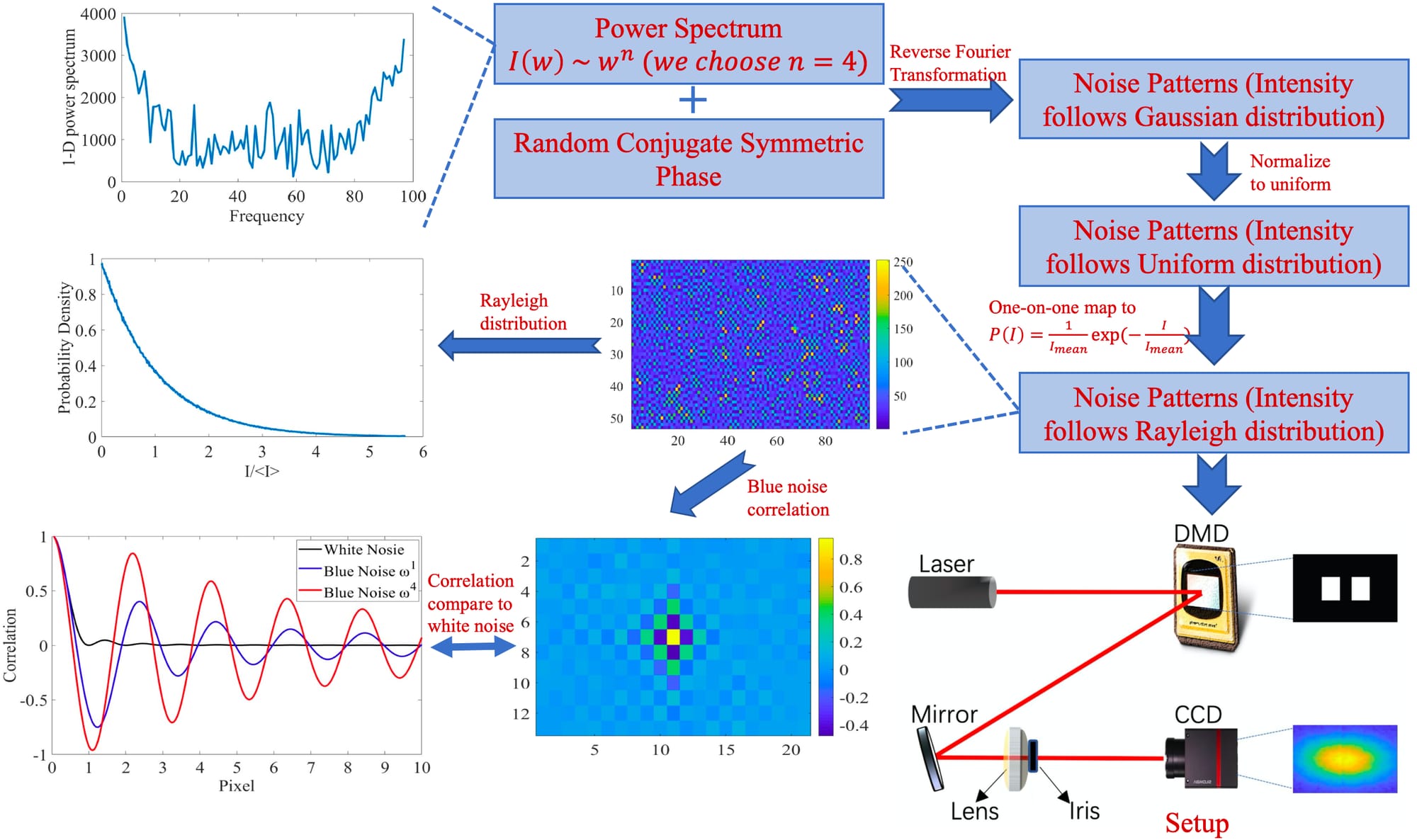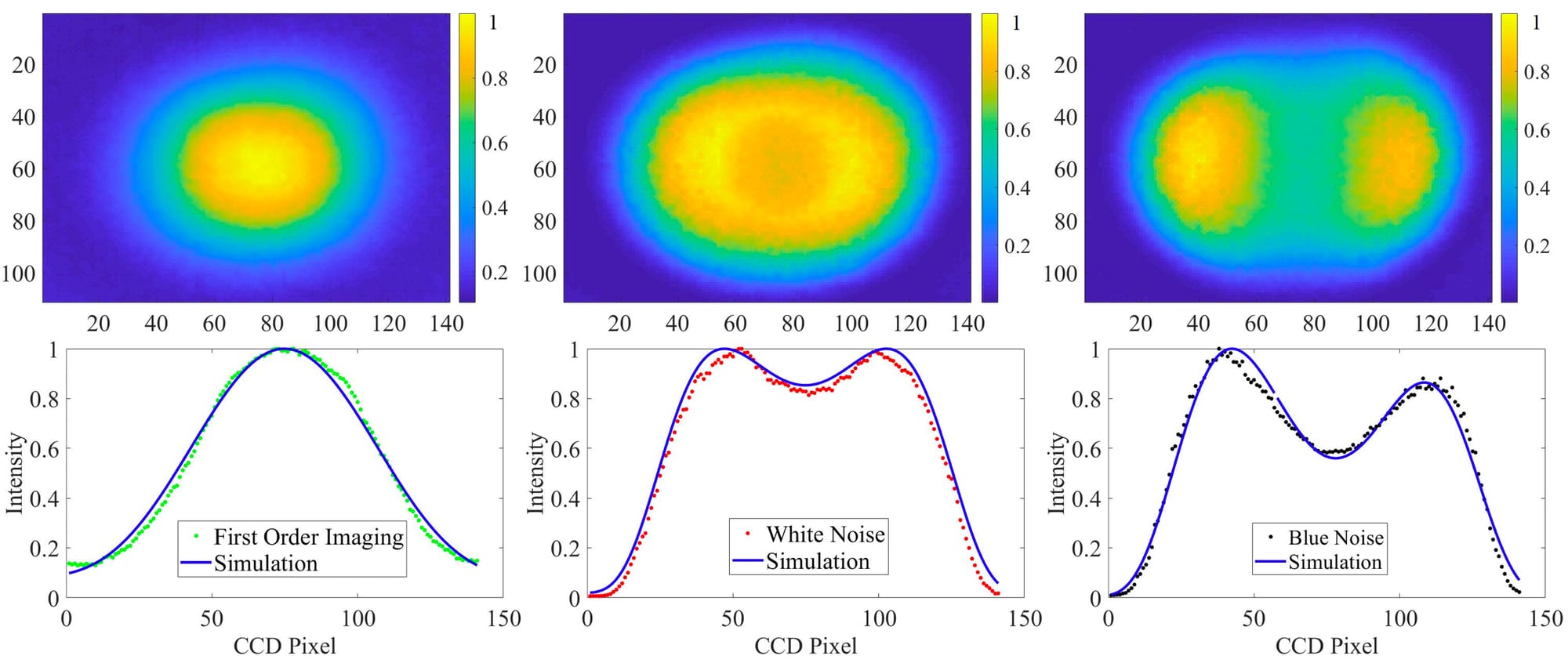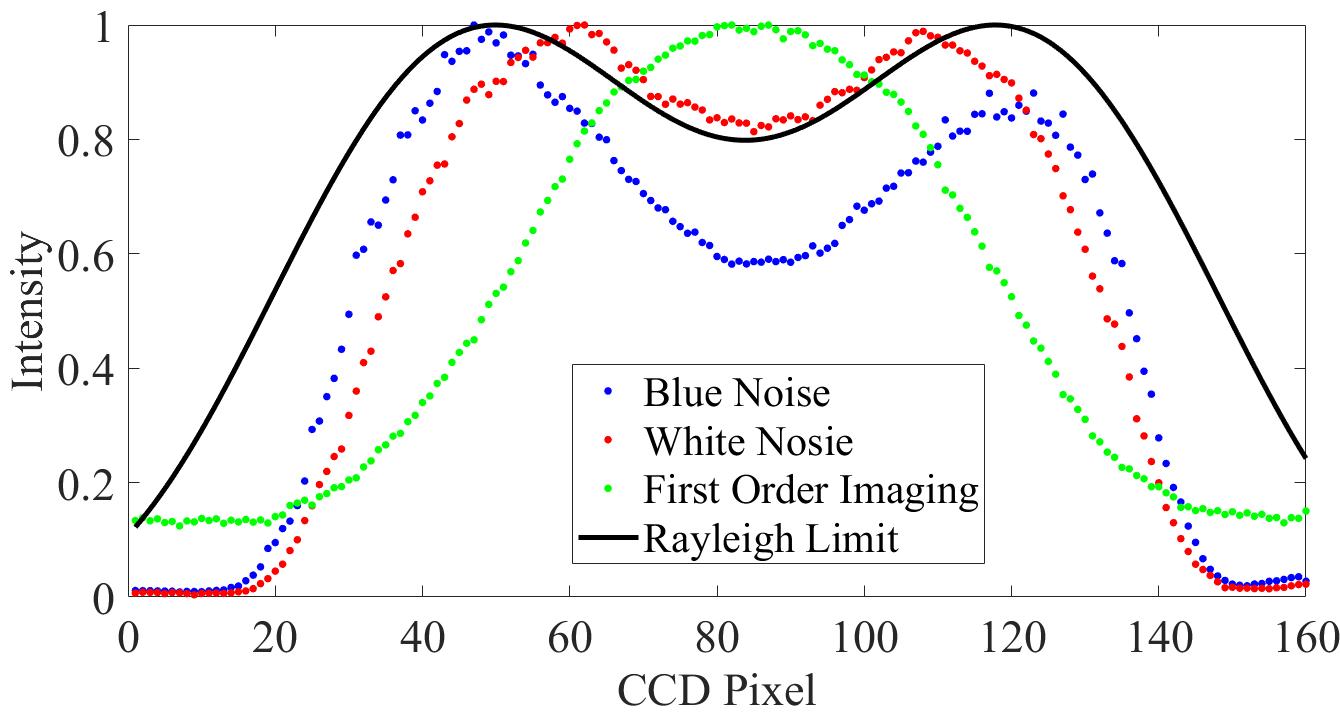Superresolving Correlation Imaging

Superresolving second-order correlation imaging using synthesized colored noise speckles.pdf
http://arxiv.org/abs/2102.06079
We present a novel method for generating blue noise pattern for speckle illumination. The spectral den- sity of the customized blue noise speckle pattern increases with increasing spatial frequency. We keep the probability density function of the speckles intensity as negative exponential distribution, with autocorrelation close to 1. Nevertheless, we show that there exist a negative cross-correlation between two neighborhood pixels. We then demonstrate a sub-Rayleigh diffraction imaging with illumination of our customized noise pattern, the resolution is much beyond the normal second order correlation. This work can be used to sharpen the edge of objects, yield a good visual resolution, and enhance the imaging quality in general. It also provides a framework for customizing color-noise speckle patterns with a variety of applications in imaging and microscopy systems.

Fig. 1. Flow Chart of blue noise pattern generation
The main results are shown below in Fig. 2.

Fig. 2. (a), (b), and (c): First-order image, Second-order image with Rayleigh white noise, and Second-order image with Rayleigh red noise. The images of the two slits are well separated with blue noise, but overlapped with white noise and first-order image. (d), (e), and (f): dots are 1D cross section from vartical pixel 60 of (a), (b), and (c), respectively. Solid lines are theoretical simulation.
We normalize each data independently, and plot their 1D intensity graph together. Our experimental peremeter about pinhole is 800 um, from which we can calculate the theoretical Rayleigh limit via diffraction. The curve-fitting result is shown in Fig. 3.

Fig. 3. The dot-line are 1D graph plotted by the data from the line with vertical pixel at 60 in 2D image. The solid line is the theoretical Rayleigh limit curve according to our known experimental parameters and theory.
According to the Rayleigh limit criterion, in order to well resolve the two slits in first-order image, we can calculate that the minimum required diameter of the lens should be ≥ 2.1 mm, while the minimum required diameter of the lens via blue noise is ≥ 0.67 mm. Therefore by using our customized blue nosie pattern, the resolution is enhanced ∼ 3.1 times.



